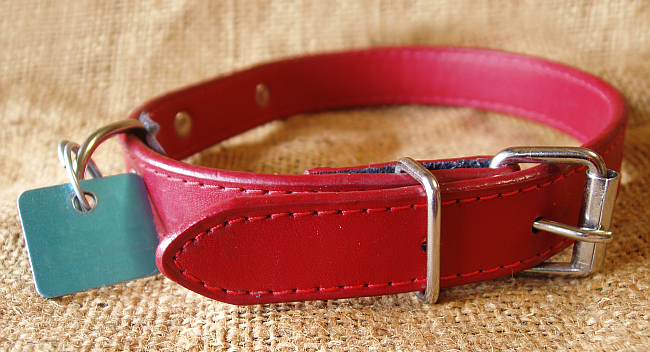Picking a dog collar can be a daunting task, not because it is a task difficult in itself, but because of the deluge of options at the stores and especially online. To help pick a good quality collar there are several things you should keep in mind, but most importantly you should figure out what type of collar is best for you dog, and worry less about the color and how cute it may be.
The Right Fit
One of the most important things to keep in mind is to make sure the collar is the right size for the dog, and fits snuggly, but comfortably around your dog’s neck. This is especially important when it comes to puppies, since they grow (and quickly); it is important to make adjustments, as necessary to keep a comfortable fit for your dog.
The Standard Flat Collar: Regardless of material, the standard collar which is a flat strip that goes around the dog’s neck and can be found almost ubiquitously, even in your local supermarket. This type of collar is suitable for most dogs; however, can be problematic for some dog breeds that have a head which is more narrow than their neck, mostly sighthounds like the Greyhound.
Head Halter: This type of collar is ideal for training (especially when training to heel), because it prevents the dog from being able to keep his nose close to the ground. The collar has two rings, one of which goes around the muzzle, and a second traditional loop that sits high on the neck. These two loops, in combination, allow the owner to keep the dog’s attention on himself, and not to what smells interesting on the ground.
Back-Clip Harness: This type of collar is useful for smaller breeds, and those that have a tendency to suffer from tracheal collapse, which results from undue pressure on the trachea. The harness places the pressure on the chest of the dog. It is comprised of two loops through which the dog’s legs are placed, and the harness is attached right below the neck on the dog’s back.
Front-Clip Harness: Similar to the back-clip harness, this variety is designed to help the dog owner exert more control over the dog when on a leash. The front-clip harness is similar in design to the back-clip harness, except (as the name suggest) the leash clips in front of the chest as opposed to the back.
The Martingale Collar: The Martingale collar is comprised of two loops, one large, and one small loop. The large loop has one ring on either end, through which the smaller loop passes. The smaller loop is then attached to the leach. When the dog pulls on the leash, the smaller loop contracts the larger loop, placing pressure on the dog’s neck, but not enough to choke the dog. This type of collar can be a great way to control the pulling behavior.
Avoid any types of collars that are designed to choke or pinch the neck as they can easily hurt the dog.

